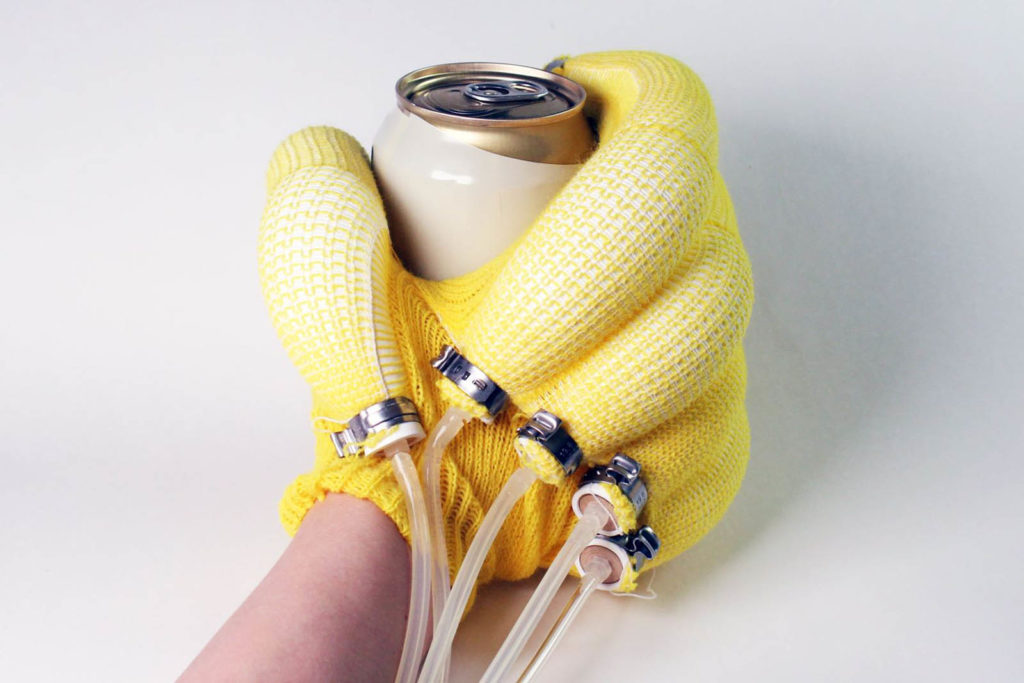
Scientists from MIT’s Computer Science and Artificial Intelligence Laboratory (CSAIL) have devised a scalable pipeline to computationally design and digitally fabricate soft pneumatic actuators. “PneuAct” has addressed an issue with soft robotics, which have typically required manual design and fabrication, by using a machine-knitting process that operates autonomously.
A human designer specifies the stitch and sensor design patterns in software to program how the actuator will move, and it can then be simulated before printing. The textile piece is fabricated by the knitting machine, which can be fixed to an inexpensive, off-the-shelf rubber silicone tube to complete the actuator. The knitted actuator integrates conductive yarn for sensing, allowing the actuators to “feel” what they touch.
The team designed several prototypes, including an assistive glove, a soft hand, an interactive robot and a pneumatic walking quadruped. The glove, for example, can be worn to supplement finger muscle movement, minimizing the amount of muscle activity needed to complete tasks and motions. This holds potential for those with an injury, limited mobility, or experiencing other trauma to the fingers.
“Digital machine knitting, which is a very common manufacturing method in today’s textile industry, enables ‘printing’ a design in one go, which makes it much more scalable,” says Yiyue Luo, MIT CSAIL Ph.D. student and lead author of a new paper about the research. “Soft pneumatic actuators are intrinsically compliant and flexible, and combined with intelligent materials, they’ve become a necessary force in many robots and assistive technologies — and rapid fabrication, with our design tool, can hopefully increase ease and ubiquity.”
“Our software tool is fast, easy to use, and it accurately previews users’ designs, allowing them to quickly iterate virtually while only needing to fabricate once. But this process still requires some trial-and-error from humans. Can a computer reason about how textiles should be physically programmed in actuators to allow for rich, sensing-driven behavior? That’s the next frontier,” says Andrew Spielberg, postdoc in materials science and mechanical engineering at Harvard University, another author on the paper.
Luo wrote the paper alongside Kui Wu, former MIT CSAIL PhD student, Spielberg, MIT postdoc Michael Foshey, and MIT professors Tomas Palacios, Daniela Rus, and Wojciech Matusik. They presented the paper at the ACM Conference on Human Factors in Computing Systems.
Source: MIT CSAIL
 TEXTILES.ORG
TEXTILES.ORG


